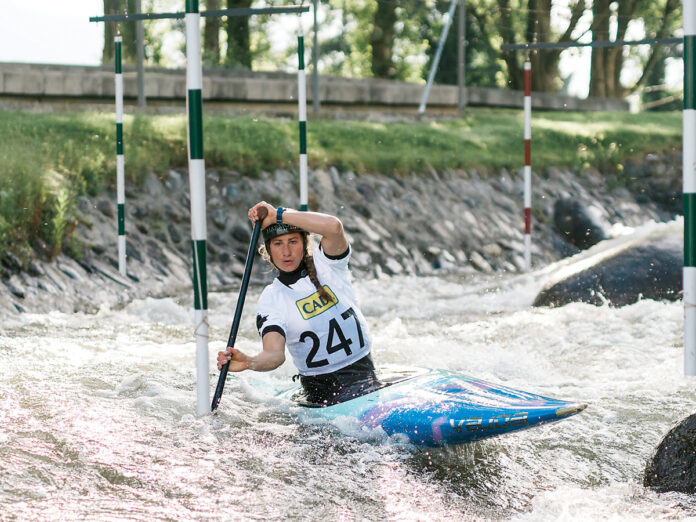
Women have faced discrimination in sport since they were banned from the ancient Olympics. But today, women are fighting back and positive change is creeping forward.
Canadian canoeist Haley Daniels of Calgary has been lobbying for years to have her sport, women’s C1 slalom canoe, included in the Olympics along with the comparable men’s events.
Daniels and other athletes in the canoeing community put pressure on the International Canoe Federation. They also looked into a class action suit and went to the media to bring their fight to the public. Finally, in the 2020 Olympic Summer Games in Tokyo, women’s C1-200m and C2-500m sprint events and C1 slalom canoeing will make their debut.
“I’ve been ready to compete for 12 years,” says Daniels. “Tokyo is a big deal and it’s been a long time coming. I hope we can leave a legacy for other women’s sports.”
Aside from fighting for opportunities to compete, equal pay for equal play is a big issue. Professional female athletes receive far less compensation than their male counterparts – often millions less. Some teams are suing.
In March 2019, the U.S. national women’s soccer team filed a gender discrimination lawsuit against U.S. Soccer. From 2013 – 16 the women earned as little as 38 per cent of what the U.S. men’s team received.
Women’s professional hockey is another stark example. Salaries are under the poverty line and one of the two North American leagues folded this spring. In May 2019, over 200 players announced they would skip next season to agitate for creation of a unified league with a living wage and benefits.
According to a report by the Canadian Association for the Advancement of Women and Sports, only 4 per cent of TV sports programming in Canada and only 5 per cent of print coverage features women. With such a lack of visibility, women’s sports don’t attract the same level of fan support or funding opportunities as men’s sports.
Women’s sports that do reach a wider audience have proven popular. In 2015 the FINA Women’s World Cup final between the U.S. and Japan was the most watched soccer game in U.S. history with 25 million viewers.
“Now, young girls are dreaming of playing on the national soccer team or on our hockey team,” says Christine Sinclair of Canada’s national soccer team in a Women’s Health interview. “What we thought was unachievable at one point is now possible.”
Clearly there is only one way for women’s sport to move forward in the battle for equality and that’s to fight back. And, like the tortoise in the race with the hare, women’s sports are slowly gaining ground. In the end, we all know the tortoise prevailed.
Barriers In Women’s Sports
Women’s sports have come a long way but here are a few barriers that haven’t yet been broken.
- Women can’t compete in the Tour de France
- No Olympic decathlon event for women, only heptathlon
- No 4-man bobsleigh event for women
- Women play three sets in tennis compared to 5 for men
Equal Pay For Equal Play? Not For These Female Pros…
- Cycling – Professional female team: $200,000/year vs $25 million/year for men’s teams.
- Basketball – WNBA player: $72K average/year vs. $5 million average/year NBA.
- Hockey – NWHL/CWHL: $2,000 – $26,000/average per year vs an average of $2.4 million for NHL.















